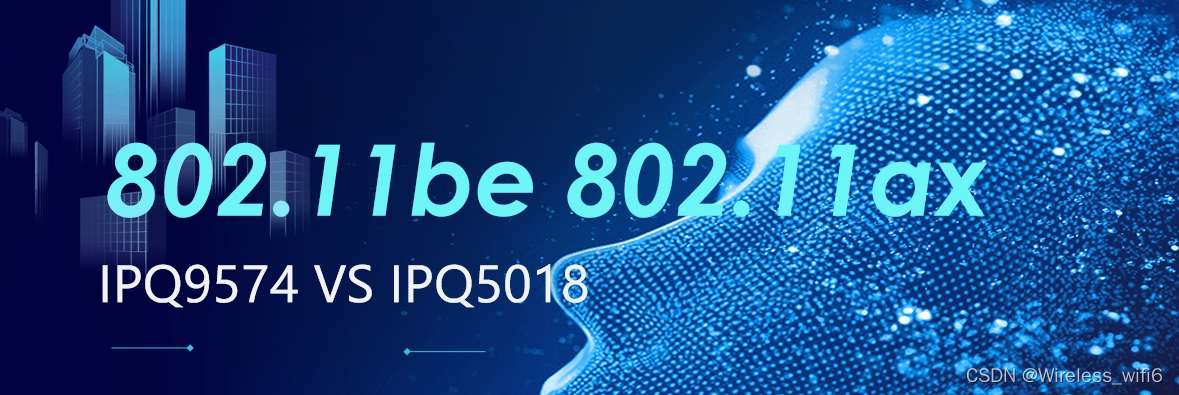IPQ9574 VS IPQ5018|what‘s the difference only have 2.4G on board?
IPQ9574 VS IPQ5018|what's the difference only have 2.4G on board?
The IPQ5018 and IPQ9574 are both designed as 2.4GHz motherboards with a radio, and the main differences between them are likely to be in terms of performance and functionality.
The IPQ9574 is a higher-end processor that is more powerful, supports more network security features and faster wireless speeds. It is based on the ARM Cortex-A53 architecture, has a dominant frequency of up to 2.2GHz, integrates Qualcomm's Adreno 616 GPU and Wi-Fi 6E support, supports MU-MIMO and OFDMA technology, and delivers wireless speeds of up to 3.6Gbps. In comparison, the IPQ5018 is caged at 1.8GHz and integrates Qualcomm's Adreno 506 GPU and Wi-Fi 6 support to deliver wireless speeds of up to 1.8Gbps.
In addition, the IPQ9574 supports more network security features such as 802.11ax MU-MIMO and OFDMA technology, WPA3 encryption, VPN acceleration, network traffic management, and more. These features can improve the security and performance of the network, making it more suitable for use in high-end Wi-Fi routers and other networking devices.
Overall, if both processors are designed as a 2.4GHz motherboard with a radio, the IPQ9574 may offer higher performance and more network security features, while the IPQ5018 may be more suitable for some mid-range Wi-Fi routers and other networking devices.

Some key features of IPQ5018:
Processor architecture: The IPQ5018 is based on the ARM Cortex-A53 architecture and features four processor cores at 1.8GHz.
Wi-Fi support: The IPQ5018 integrates Qualcomm's Wi-Fi 6 technology to support wireless connectivity in the 2.4GHz band. It offers wireless speeds of up to 1.8Gbps for faster data transfer and more stable connections.
Network security features: IPQ5018 supports WPA3 encryption, providing a higher level of network security protection. It also supports VPN acceleration, which speeds up the connection speed and performance of virtual private networks (VPNS).
MU-MIMO and OFDMA technologies: IPQ5018 supports MU-MIMO (multiple user Multiple input multiple output) and OFDMA (orthogonal frequency division multiple access) technologies, which can improve network performance and throughput in multi-user environments.
Low-power design: The IPQ5018 uses Qualcomm's low-power design to deliver high performance while minimizing power consumption and heat generation.
In summary, the IPQ5018 is a high-performance processor with high network security and low power design for Wi-Fi motherboards and other networking devices. It provides a fast wireless connection and some key network functions to meet users' needs for high-speed, stable and secure network connections.
Some key features of IPQ9574:
Processor architecture: The IPQ9574 is based on the ARM Cortex-A53 architecture and features four processor cores at up to 2.2GHz.
Wi-Fi support: The IPQ9574 integrates Qualcomm's Wi-Fi 6E technology to support wireless connectivity in the 2.4GHz and 5GHz bands. It offers wireless speeds of up to 3.6Gbps for faster data transfer and more stable connections.
Network Security features: The IPQ9574 supports a variety of network security features, including 802.11ax MU-MIMO and OFDMA technologies, WPA3 encryption, VPN acceleration, and network traffic management. These functions improve network security, performance, and management capabilities.
Low power design: The IPQ9574 uses Qualcomm's low power design to provide high performance while minimizing power consumption and heat generation.
High-speed connectivity: The IPQ9574 supports multi-user Multiple Input Multiple Output (MU-MIMO) and orthogonal frequency division multiple access (OFDMA) technologies to improve network performance and throughput in multi-user environments.
In summary, the IPQ9574 is a high-performance processor with rich network security features and a low-power design. It supports Wi-Fi 6E technology to provide fast, stable and secure wireless connectivity. The IPQ9574 is suitable for high-end Wi-Fi motherboards and other networking devices to meet users' needs for high-speed, secure and reliable network connectivity.
本文来自互联网用户投稿,该文观点仅代表作者本人,不代表本站立场。本站仅提供信息存储空间服务,不拥有所有权,不承担相关法律责任。 如若内容造成侵权/违法违规/事实不符,请联系我的编程经验分享网邮箱:veading@qq.com进行投诉反馈,一经查实,立即删除!